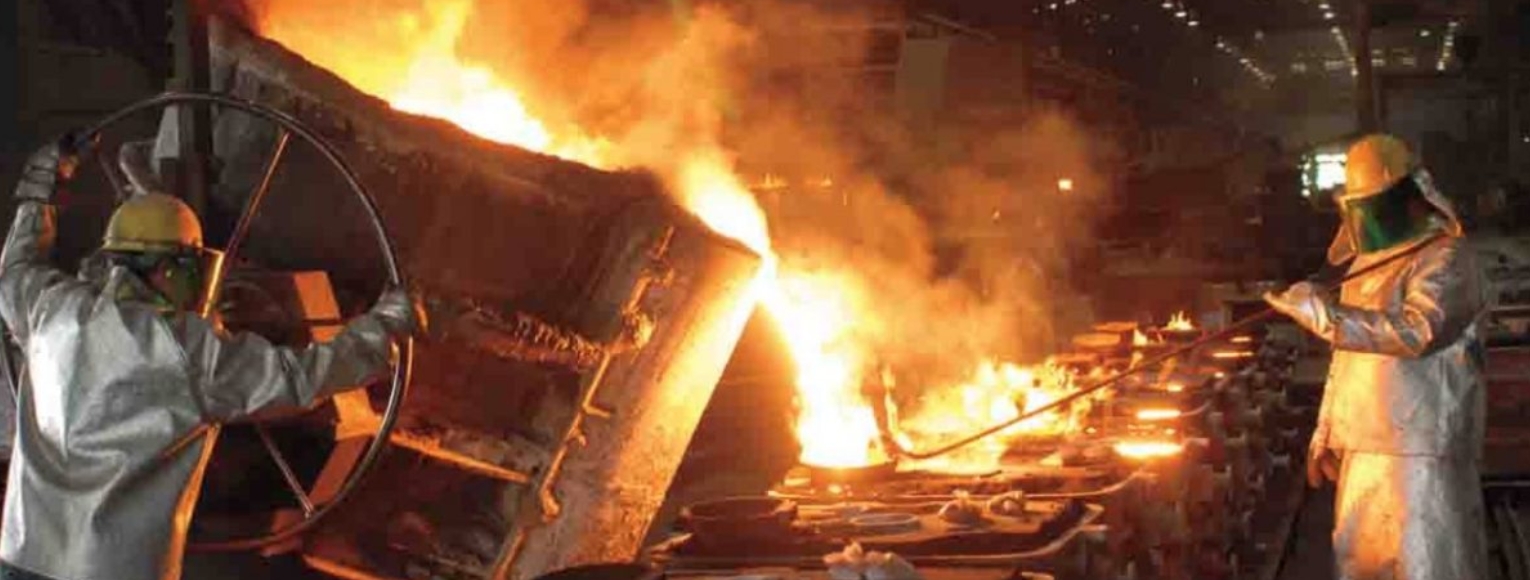
The steel casting process is a critical manufacturing technique employed to create complex and durable components used across various industries, including automotive, aerospace, and construction. Ensuring precision and reliability in the steel casting process is essential to produce high-quality castings that meet stringent specifications and perform reliably in demanding applications. Quality control in the steel casting process encompasses a range of activities, from raw material inspection to final product testing, aimed at identifying and mitigating defects to guarantee the integrity of the castings.
Overview of Quality Control in the Steel Casting Process
Quality control in the steel casting process involves systematic procedures and checks implemented at various stages of production to ensure that the final castings adhere to specified standards. The primary stages where quality control is crucial include:
- Raw Material Inspection
- Mold Preparation and Inspection
- Melting and Pouring
- Cooling and Solidification
- Finishing and Machining
- Final Inspection and Testing
Key Quality Control Activities
1. Raw Material Inspection
Ensuring the quality of raw materials is the first step in the steel casting process. Quality control measures at this stage include:
- Chemical Composition Analysis: Verifying that the chemical composition of raw materials, such as iron ore and alloys, meets the required specifications.
- Physical Property Testing: Assessing the physical properties of raw materials, including hardness, tensile strength, and ductility.
2. Mold Preparation and Inspection
Mold preparation is critical to achieving precise castings. Quality control activities in mold preparation involve:
- Dimensional Accuracy Checks: Ensuring that molds are created with accurate dimensions to match the design specifications.
- Surface Quality Inspection: Examining the surface of molds for defects, such as cracks or roughness, that could affect the casting quality.
3. Melting and Pouring
The melting and pouring stage is pivotal in the steel casting process. Quality control measures include:
- Temperature Monitoring: Maintaining the appropriate temperature range to ensure proper melting and flow of molten steel.
- Inclusion Control: Implementing measures to prevent the inclusion of impurities and non-metallic particles in the molten steel.
4. Cooling and Solidification
Proper cooling and solidification are crucial to achieving desired mechanical properties. Quality control activities at this stage encompass:
- Cooling Rate Control: Regulating the cooling rate to avoid defects, such as cracks or warping.
- Solidification Monitoring: Ensuring uniform solidification to prevent segregation and porosity.
5. Finishing and Machining
Finishing and machining processes enhance the final casting’s dimensional accuracy and surface quality. Quality control measures include:
- Dimensional Verification: Checking the dimensions of finished castings against design specifications.
- Surface Finish Inspection: Assessing the surface finish for smoothness and absence of defects.
6. Final Inspection and Testing
The final stage involves comprehensive inspection and testing to ensure the castings meet all specified requirements. Quality control activities include:
- Non-Destructive Testing (NDT): Utilizing techniques such as X-ray, ultrasonic, and magnetic particle testing to detect internal and surface defects.
- Mechanical Property Testing: Conducting tests to measure mechanical properties, including tensile strength, hardness, and impact resistance.
Quality Control Tools and Techniques
Various tools and techniques are employed in quality control to achieve precision and reliability in the steel casting process. Some of the common tools and techniques include:
- Spectrometers: Used for chemical composition analysis of raw materials and molten steel.
- Coordinate Measuring Machines (CMM): Employed for dimensional accuracy checks of molds and finished castings.
- Thermocouples and Pyrometers: Utilized for temperature monitoring during melting and pouring.
- X-ray and Ultrasonic Testing Equipment: Implemented for non-destructive testing of castings.
Tables Illustrating Quality Control Parameters
Table 1: Raw Material Quality Control Parameters
| Parameter | Specification | Testing Method |
|---|---|---|
| Chemical Composition | As per material grade specification | Spectrometer |
| Tensile Strength | Minimum required value (e.g., 500 MPa) | Tensile Testing Machine |
| Hardness | Specified range (e.g., 200-250 HB) | Hardness Tester |
Table 2: Final Casting Inspection Parameters
| Parameter | Specification | Testing Method |
|---|---|---|
| Dimensional Accuracy | ±0.1 mm | CMM |
| Surface Finish | Ra ≤ 1.6 µm | Surface Roughness Tester |
| Internal Defects | No detectable cracks or voids | X-ray/Ultrasonic Testing |
Lists of Common Defects and Their Mitigation
Common Defects in Steel Casting Process:
- Porosity: Voids within the casting caused by gas entrapment or shrinkage.
- Cracks: Fractures that occur during cooling due to thermal stresses.
- Inclusions: Non-metallic particles embedded within the casting.
- Warpage: Deformation caused by uneven cooling or residual stresses.
Mitigation Strategies:
- Porosity: Implement proper degassing techniques and control cooling rates.
- Cracks: Optimize cooling processes and use appropriate mold materials.
- Inclusions: Ensure thorough filtration and cleaning of molten steel.
- Warpage: Employ uniform cooling and stress-relief treatments.
Conclusion
Ensuring precision and reliability in the steel casting process through robust quality control measures is paramount for producing high-quality castings. By systematically inspecting raw materials, monitoring critical parameters during melting and pouring, controlling cooling and solidification, and conducting thorough final inspections, manufacturers can achieve castings that meet stringent specifications and perform reliably in their applications. The use of advanced quality control tools and techniques further enhances the ability to detect and mitigate defects, contributing to the overall success and sustainability of the steel casting process.
